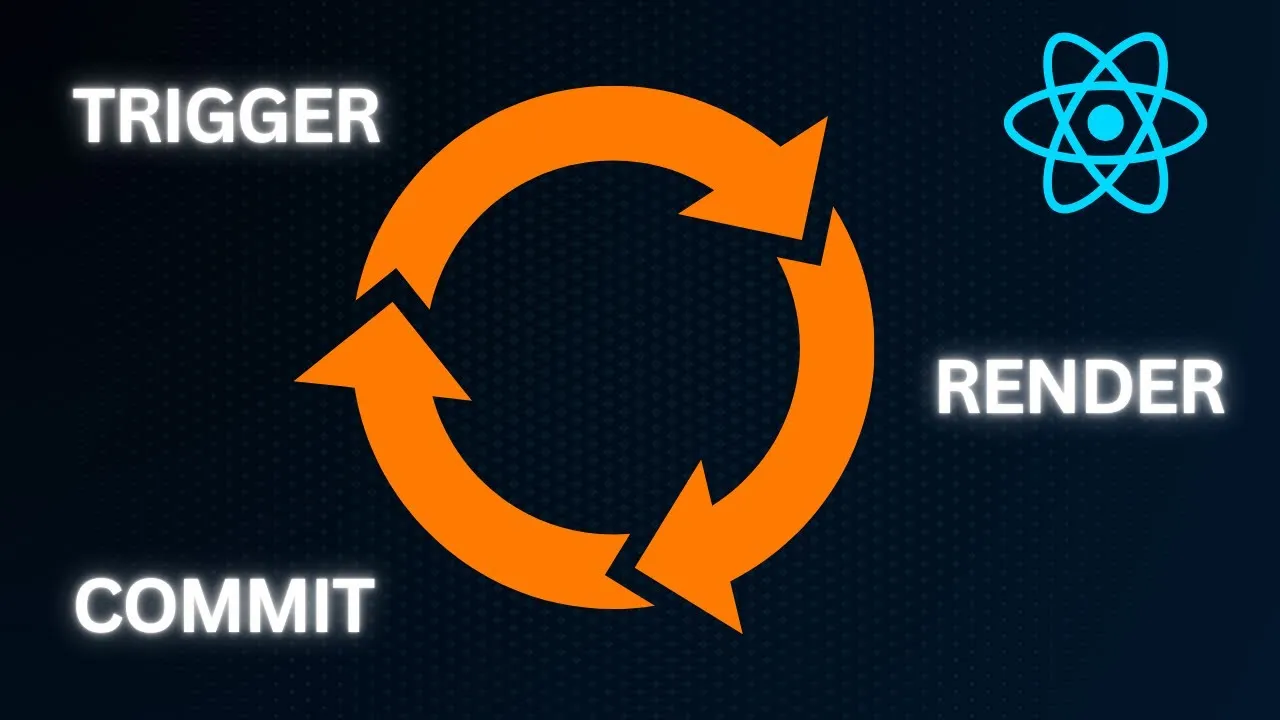When working with React, you often hear terms like "Virtual DOM," "re-render," or "state." These are just the surface pieces of a much more powerful and sophisticated mechanism. To truly become a professional React developer, you need to dig deeper—into React’s "factory floor"—and understand the two core phases that power everything: the Render Phase and the Commit Phase.

Understanding these two phases not only helps you write more efficient and optimized code, but is also the key to debugging and mastering advanced features like Concurrent Mode.
Let’s uncover the magic behind React!
🎨 Render Phase: The Architect Making Plans
Imagine you’re building a house. Before laying the first brick, the architect draws up a detailed blueprint. They calculate, compare with the old design, and determine exactly what needs to change, add, or remove.
The Render Phase in React is this "planning" stage.
In this phase, React does all the "behind-the-scenes" work without changing the actual UI. Specifically, React will:
- Call your component: When state or props change, React calls your functional component (or the
render()method of a class component) to see what the UI should look like with the new data. - Create a new Virtual DOM: The result (JSX) is used to build a JavaScript object tree called the Virtual DOM. This is a lightweight representation of the real browser DOM.
- Diffing: React compares this new Virtual DOM tree with the previous one. This comparison algorithm (called "Reconciliation" or "Diffing") is highly efficient, helping React find the minimal set of changes needed for the UI.
Key Features of the Render Phase
This is the most important part to remember:
- Safe & Pure: This phase must be a "pure function." It only calculates and does not cause any side effects.
- Interruptible: This is React’s "superpower!" React can start the Render Phase, pause it to handle something more important (like user input), and then resume or even discard and restart. This ability paved the way for Concurrent Mode, ensuring your app never "freezes" or "lags."
Golden Rule: NEVER perform side effects in the Render Phase. This includes:
- Calling APIs.
- Directly manipulating the DOM.
- Setting up subscriptions (like
setTimeout,setInterval).- Mutating state directly.
Why? Because the Render Phase can be called multiple times before commit. Doing side effects here leads to redundant API calls, inconsistent data, and hard-to-debug errors.
🏗️ Commit Phase: The Builder Doing the Work
After the architect finishes the detailed blueprint and marks all the necessary changes, the blueprint is handed to the builders. They read the plan and apply the exact changes to the real building.
The Commit Phase is this "construction" stage.
This is when React takes the list of changes calculated in the Render Phase and applies them to the real browser DOM.
In this phase, React will:
- Update the DOM: React goes through the list of changes and performs the necessary DOM operations: adding, removing, or updating nodes. This is when users actually see changes on the screen.
- Run Lifecycle Methods/Hooks: After the DOM is updated, React runs important hooks related to side effects and the DOM, specifically
useLayoutEffectanduseEffect.
Key Features of the Commit Phase
This is also crucial to remember:
- Non-interruptible: Once started, the Commit Phase runs to completion. This ensures the DOM is always consistent, and users never see a half-updated UI.
- The Place for Side Effects: This is the safe and proper time for side effects.
useLayoutEffect: Runs synchronously right after React updates the DOM but before the browser paints. Useful when you need to read the size or position of a DOM element right after it changes, to perform another update.useEffect: Runs asynchronously after the Commit Phase is done and the browser has painted the UI. This is the ideal place for most side effects like API calls, cleaning up subscriptions, etc.
🧠 Summary: The Complete Flow
Let’s summarize the whole process from A to Z:
- Trigger: An event occurs (e.g., user clicks a button,
setStateis called). - Scheduling: React schedules an update.
- Render Phase:
- React starts calculating in memory.
- It calls the relevant components and creates a new Virtual DOM.
- Compares the new and old Virtual DOMs to find differences.
- (This phase can be paused or aborted.)
- Commit Phase:
- React applies the calculated changes to the real DOM.
- The user sees the updated UI.
- (This phase cannot be interrupted.)
- Side Effects:
useLayoutEffectruns.- The browser "paints" the changes to the screen.
useEffectruns.
Why Does This Distinction Matter?
Understanding the separation between Render and Commit is foundational for writing correct and efficient React code:
- Performance optimization: You know that the Render Phase is where logic should be fast and pure—avoid heavy tasks. All side effects should be placed in
useEffectto avoid slowing down rendering. - Avoiding bugs: You’ll never make the mistake of calling APIs on every re-render, because you know that’s the job of the Commit Phase (via
useEffect). - Ready for the future: This is core knowledge for using advanced features like
useTransition,useDeferredValue, and the whole Concurrent React ecosystem—helping you build complex web apps that are still incredibly smooth.
Hopefully, this article not only helps you understand the definitions of the Render Phase and Commit Phase, but also lets you appreciate the elegance of React’s architecture. Next time your component re-renders, picture the architect planning and the builder carefully constructing—you’ll find React much more approachable and intuitive!
![[React Basics] How to Use the Profiler in React DevTools to Optimize Performance](/images/blog/how-to-use-profiler-in-react-devtools.webp)
![[Advanced React] A Detailed Guide to Time Slicing and Scheduling in React](/images/blog/time-slicing-and-scheduling-in-react.webp)
![[Advanced React] React Concurrent Mode: Taking App Performance to the Next Level](/images/blog/react-concurrent-mode.webp)
![[Advanced React] Micro-Frontends Architecture: A Solution for Large Web Apps](/images/blog/micro-frontends-architecture.webp)